Text



Get to know Sheena Kristine Cases, data analyst and policy researcher
1) What do you do?
I crunch data, integrate knowledge, write stories using data and various information, package them, and then share them. I am a research generalist who has found some meaning in doing data management and analysis, MEAL (monitoring, evaluation, accountability, and learning) work, and knowledge management. I have been working in the development sector for six years now with a few more years spent on policy and academic research.
2) Where do you work?
I currently work at the U.N. Development Programme (UNDP) as a Data Analyst for Pintig Lab, a multi-stakeholder network of physicians, economists, and data scientists tasked with providing the government with data-driven systems and policy insights to help inform COVID-19 response and recovery strategy.
I also previously worked for Oxfam Pilipinas as a Knowledge Management Senior Officer and for Save the Children as a Monitoring, Evaluation, Accountability, and Learning Officer.
As my volunteer work, I write for Subselfie.com, an online magazine for the young generation of Filipinos. I write about faith, mental health, and some personal reflections about life in general. I also serve at Victory Church where I tried teaching kids (our future leaders) Bible principles for a few years and also am trying my best to lead single professionals.
3) Tell us about the photos!
[Top left and right:] My grad photo and artworks. I also like to draw and paint. Back then when I had more time, I am able to finish more detailed artworks. Now, I resort to doing creative doodles. Doodles are also fun to make.
[Bottom:] Research Bootcamp at Bangkok, Thailand sponsored by Oxfam in Asia! It was an awesome week learning the Oxfam way of doing research. I have learned important pointers for writing for the public for influencing from this memorable trip, aside from the fact that I have been with beautiful and passionate people. Buddies during this trip were also fun to be with.
4) Tell us about your academic career path so far.
I studied in the U.P. Integrated School from Kinder to Grade 10. I initially took up B.S. Civil Engineering for a year before shifting to B.S. Economics in U.P. Diliman where I found more flexibility and breadth in learning (we had an option to take many electives). I graduated in 2011 with honors. I then worked for a few months doing policy work and then spent eight months working for a start-up company doing research on biofuels. I then decided to take up M.A. Demography in 2012 in the U.P. Population Institute. It was a long haul before I graduated because I decided to work to help my siblings and aging parents. Finally, in 2019 I finished my program with a Master’s thesis titled, “The Relationship Between Religiosity and Fertility: A Comparison of Five Major Religions”. I was one of the online graduates in July 2020.
I took up consultancy work when I was finishing my Master’s thesis. One memorable consultancy work was when I did data management for the K to 12 Program Transition Task Force of the Commission on Higher Education where we estimated the budget needed for the K to 12 transition. Another was when I did archival research for a PhD student in Harvard University where I got to examine letters from the First Republic of the Philippines.
The years that followed were all development research, monitoring, and evaluation on projects falling under the themes ranging from youth employment, women empowerment, and resilience.
Since the COVID-19 crisis hit the world, I have been pondering about doing a PhD. I think expecting too much from myself right now is not good for mental health. We have to go back to basics. So I just pray about it. Hopefully soon, I'll be able to fulfill that dream.
5) Anything else you’d like to share
I thank God for His grace and mercy. To God be all the glory. Take care and keep safe.
2 notes
·
View notes
Photo


Meet Christelle Ancajas, organic chemist
1) What do you do?
I’m what you call a “synthetic organic chemist in training” since I’m currently a third-year PhD student in Chemistry. Research in our group includes the design of liposome systems for drug delivery applications and the synthesis of lipid probes for elucidating biological activities.
In my work, I design, synthesize, and characterize unnatural lipid substrates that can be fed to live cells to produce chemically functionalized versions of important lipids. I then perform various techniques to detect the abundance and localization of labeled lipid products using fluorescence microscopy, fluorescence-based thin layer chromatography, flow cytometry, and lipidomic mass spectrometry.
This research is important because certain lipid classes play important regulatory roles or are important biomarkers. While many detection methods are known for studying DNA, RNA, and proteins, tracking lipids is a particular challenge due to the constant interconversion between lipid species that are not directly encoded in the genome.
This area of research is exciting, and I think it’s time for us to shift some focus to look at a different class of biomolecules. We are really interested lipid metabolic pathways and its potential use for targeted delivery of drugs. Protein-lipid interactions is also a big area to explore.
2) Where do you work?
I’m pursuing my PhD in Chemistry at the University of Tennessee in Knoxville under the guidance of Dr. MIchael Best. I do most of my research in a typical synthetic organic chemistry lab and also spend hours conducting studies at other departments such as in a microbiology lab and an advanced microscopy-imaging center on campus.
Outside of research labs, you may find me in organic chemistry teaching labs or proctoring exams in lecture halls depending on the semester or assigned class for TA (teaching assistant) work.
3) Tell us about the photos!
[Left:] Selfie with my hood- where all the cooking happens (top). I spend hours and hours using the confocal microscope (bottom).
[Right:] Selfie with my amazing labmates while at the neighboring Oak Ridge National Lab (top). Joined Bachata team and got to perform at a stage for the first time right before the pandemic hit in 2019 (bottom).
4) Tell us about your academic career path so far.
Elementary: Visayan Nazarene Bible College in Cebu, Philippines (2008)
I was born to a dedicated field engineer (my father) and a passionate chemistry teacher (my mom).
High School: Bluestone High School and Governor’s School of Southside Virginia (2010-2014)
College: B.S. Chemistry at Randolph-Macon College (2014 - 2017)
During my undergrad years, I was fortunate to conduct awesome research in two separate labs. While I spent most of my senior year working through a glove box (physical organic chemistry), I had a short research stint that involved cellular microscopy techniques as well as working with mice (cell biology). I graduated in 2017 before taking a gap year to complete my graduate program applications.
Current: Ph.D in Chemistry – Candidacy stage (2018 - present)
5) Anything else you’d like to share?
Outside of research, I have very diverse interests- mirroring the very nature of my research (Think jack of all trades, master of none if you recall the various areas of my work: organic synthesis, lipidomics, imaging, cell culture…)
For one, I love dancing as much as I love science. Play any type of music and you’ll see my foot tapping away. Particularly though, I enjoy social dancing (bachata and salsa). Second, I’m a language enthusiast. If time allows, I watch TV shows and podcasts in Spanish. Although first language attrition will never happen to me kay mag binisaya man gihapon ko pirmi (because I constantly still speak Bisaya), I try to listen to as much OPM as I can so I don’t lose touch with my Tagalog. I’m also a bigtime fangirl and love me a boyband with good harmonies. Some of my favorite bands are SB19, SHINee, and CNCO. All in all, these interests are part of my identity as a #PinoyScientist.
Lastly, for fellow scientists out there, research is humbling, and we encounter failures every day. But we do what we do because we love it! However, making mistakes over and over again and failed experiments day in and day out can be taxing to your motivation, self-confidence, and how you value yourself. It’s very easy to get your self-worth mixed up with your productivity level. The pursuit for knowledge and discovery is definitely not easy and motivation comes in waves. So, hang on to the extracurricular things outside of research- those little passions that bring you joy and light you up.
If you want to chat or follow along my PhD journey, I document my research life on my chemstagram account: @chemistelle
7 notes
·
View notes
Photo
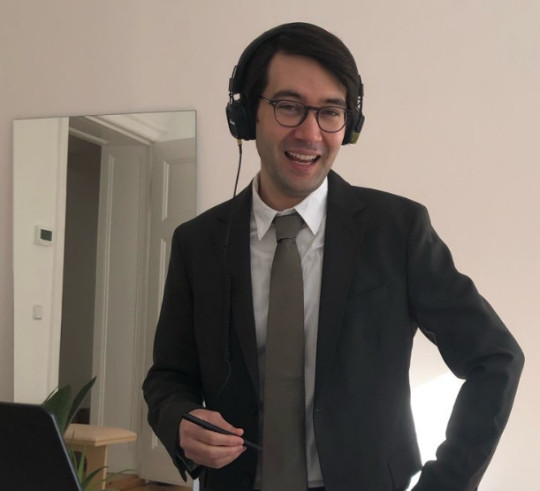
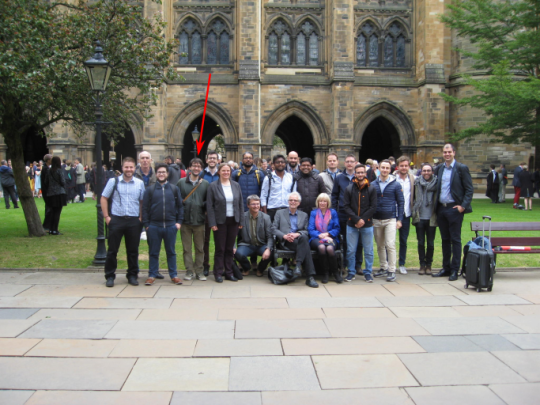
Get to know Marc Schwalbach, computational scientist
1) What do you do?
I specialize in the field of computational sciences / scientific computing. This is essentially a combination of computer science, maths, and engineering that allows us to use computers to simulate physical phenomena, such as the flow of fluids around an airplane or weather forecasting. These computer simulations serve as a virtual lab with which we can analyze different designs and scenarios even before the first prototype is manufactured for physical experiments.
For example, in my PhD I combined both fluid and structural simulations to optimize the shape of a radial turbine to maximize its aerodynamic efficiency while ensuring its structural integrity.
2) Where do you work?
I currently work as a research engineer at CFD-Berlin in Germany, where most projects involve computational fluid dynamics and aeroacoustic optimization.
3) Tell us about the photos!
[Left:] My COVID-times PhD defense pose which was conducted via video call earlier this year.
[Right:] At a project meeting in Glasgow with our international partners in 2018
4) Tell us about your academic career path so far.
After graduating from high school in the Philippines, I moved to Germany where I first attended a preparatory "Studienkolleg" that allows students with foreign high school degrees to apply for university.
I received my B.Sc. and M.Sc. in Computational Engineering Science from RWTH Aachen University where I began specializing in computational fluid dynamics and optimization. During this time, I got to spend a few months as a research intern at UBC in Canada with a DAAD RISE scholarship.
I then moved to the von Karman Institute in Belgium where I conducted my PhD research as a Marie Curie fellow and received my doctoral degree in Computer Science from the TU Kaiserslautern in Germany.
5) Anything else you’d like to share
This site builds a strong sense of community among Pinoy Scientists and it's encouraging to see that many of us abroad keep our roots in mind. I hope youngsters who are thinking about a scientific or technical career see their future selves in some of the stories posted here and that more Pinoy Scientists take the initiative to contribute. If anyone would like to get in touch, please don't hesitate: marcschwalbach.com.
#computational science#scientific computing#computational engineering science#fluid dynamics#optimization
8 notes
·
View notes
Photo


Meet Maria Pilar Lorenzo, social scientist and policy researcher
1) What do you do?
For the past few years, I have carried out research works that intersect with issues relating to governance and development. Some recent projects I participated in dwell on Philippine National Rightsizing Program (Local Government and Education sectors), local government innovations (Local Government Academy), and Rapid Field Appraisal on Philippine Decentralization, Democratization and Development (Philippine Society for Public Administration and United Nations Development Programme).
At the moment, I am focusing on my doctoral research project that seeks to flesh out the interplay of the Association of the Southeast Asian Nations and Philippine higher education by probing into the higher education policies and practices situated at regional, national, institutional and local levels.
2) Where do you work?
I joined as a PhD candidate at Ghent University’s Centre for Higher Education Governance Ghent last November 2020. I am also a Research Associate of the Philippine Society for Public Administration, a Fellow of the Society of Transnational Academic Researchers (STAR) Scholars Network, a Member of the Pacific Forum Young Leaders Program, a Member of the ASEAN Think Tanks Network (by invitation only), an Associate Member of the National Research Council of the Philippines, a Member of the Phi Kappa Phi Honor Society, and I was recently a Fellow of the Regional Academy on the United Nations and a Fellow of the Royal Society of the Arts.
3) Tell us about the photos!
[Left:] This is a screenshot from the virtual awarding ceremony of STAR Scholars Network’s 2020 A. Noam Chomsky Global Connections Award. I am truly honored to have received an award in honor of Professor Emeritus Chomsky, one of society’s highly respected thinkers.
STAR Scholars Network is a non-profit grassroots organization that pioneers open access to knowledge, catalyzes innovative teaching and virtual exchange, advances social justice for underrepresented communities, and supports the academic advancement of emerging scholars in the Global South.
[Right:] This photo was taken at Keukenhof in Netherlands. I jumped for joy when I saw the piano only to find out that it’s just for display. Anyway, I doubt if I could play again my memorized pieces because it’s been a long time that I have not practiced since I moved to Belgium for my graduate studies.
Although I am super far from being a virtuoso, one of the things that have accompanied me throughout life is music. Music, for me, carries with it various ambivalences. It can be luminous and dark, entertaining and tragic, peaceful and restless. I think it is the powerful effect of music penetrating through the recesses of weary and wounded souls that it can be that salutary emotional shock as Plato once contemplated the encounter with beauty.
4) Tell us about your academic career path so far.
I joined Ghent University's Centre for Higher Education Governance Ghent as a Ph.D. candidate in November 2020, and recently completed Master of Science in International Politics and Advanced Master of Science in Cultures and Development Studies as a VLIR-UOS scholar at the Katholieke Universiteit Leuven and Master of Public Administration at the University of the Philippines.
The various scholarships I received have also enabled me to satisfy further my intellectual curiosity by participating in a number of academic programs organized by the Indiana University, University of Illinois, University of Lausanne, University of Copenhagen, United Nations University Institute on Comparative Regional Integration Studies, University of Hohenheim, Institute of Advanced Studies Köszeg, Charles University, National Graduate Institute for Policy Studies, University of Graz, Kobe University, and Santa Croce.
It is also an honor that I always take pride in being considered as a Scholar of the Nation at the University of the Philippines Integrated School/University of the Philippines Diliman Campus from kindergarten until graduate school. The kind of education I received there is not the usual trajectory of teaching a student to be employed well one day. In my personal experience, it is to sharpen all senses so that a student can be attuned to the victories and struggles of every age.
5) Anything else you’d like to share
I can describe myself as an avid reader and an eager learner, and this kind of personality has led me to pursue knowledge from an array of sources – leaving no stone unturned given the time, energy and resources that are available. My love for learning also implies getting trained in the needed academic rigor that any researcher has to undergo and learning from other sources that may not necessarily be found within an academic setting. It is for this reason that I like conversing with all sorts of people. I believe that every person is so unique that there is much to learn from whomever I have the privilege to meet.
#social science#political science#policy research#governance#higher education#social equity#humanist#development studies#public administration
6 notes
·
View notes
Photo
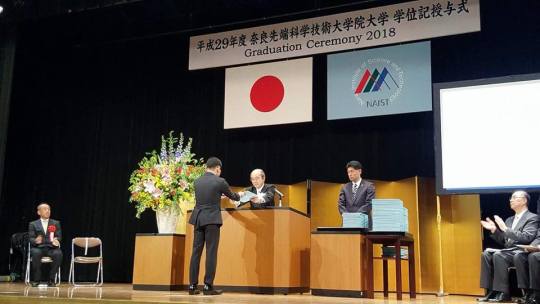

Meet Ryan Paderna, IoT and network systems engineer
1) What do you do?
I implement open standard protocols for Internet of Things (IoT) cloud systems. I also work with the Internet Engineering Task Force (IETF) working group for Internet Security to secure IoT devices from hackers.
2) Where do you work?
I am currently working in Toshiba Corporate Research and Development Center in Japan. I am part of the core team in Computer and Network Systems Lab. I develop and do research for future products of Toshiba that will be available 5 to 10 years from now.
3) Tell us about the photos!
[Left:] My PhD graduation ceremony at Nara Institute of Science and Technology (NIST), Japan in 2018.
[Right:] Souvenir T-shirt from a Hackathon event I attended in Singapore.
4) Tell us about your academic career path so far.
Elementary & High School: Father Saturnino Urios University
College: Bachelors of Electronics and Communications Engineering - University of San Carlos, Cebu City
Masters: Master of Engineering - Nara Institute of Science and Technology, Japan
Doctoral: Doctor of Engineering - Nara Institute of Science and Technology, Japan
5) Anything else you’d like to share?
I just love programming and contribute it to the open source for the benefit of the society!
3 notes
·
View notes
Photo


Meet Robert Renz Marcelo Gregorio, experimental high energy physicist
1) What do you do?
I am currently a Physics PhD student working on gas-based directional dark matter experiments. The detectors in these experiments are ultra-sensitive and can be triggered by naturally occurring radiation, mainly in the form of radon.
My research aims to minimise these radon backgrounds. In addition, there is an industrial aspect of my research towards the advancement in radon technology.
2) Where do you work?
I am based at the University of Sheffield (UK). However, my work involves travelling to underground laboratories and their associated institutions around the world. Recently, I have worked in Japan (Kobe University & Kamioka Observatory) and Italy (Sapienza University of Rome & LNGS). Travelling is currently on hold but there are plans to work in Australian National University & Statwell Underground Lab!
3) Tell us about the photos!
[Left:] Working in Boulby Laboratory which is located 1.1km underground. Fun fact it houses the deepest toilet in Europe!
[Right:] Representing the University of Sheffield in Varsity Boxing. Sports has massive importance to my academic career as it helps with my work-life balance.
4) Tell us about your academic career path so far.
Elementary/HS
P.G Elementary School (Cabanatuan City, PH)
Langdon Secondary School (London, UK)
Havering Sixth Form (Essex, UK)
BSc/Msc
Chemical Physics - Department of Chemistry, University of Sheffield (UK)
PhD
High Energy Particle Physics - Department of Physics & Astronomy, University of Sheffield (UK)
5) Anything else you’d like to share
Radon has many applications outside of fundamental physics such as an environmental health hazard; a precursor for earthquakes; tracers for groundwater and geothermal energy. Many radon applications are very relevant to the Philippines! In the future, I hope to utilise my radon expertise in the homeland!
You can find me online here-- feel free to connect!
Insta: RenzMarcelo
Twitter: @askradonrob
LinkedIn: rrmgregorio
2 notes
·
View notes
Photo
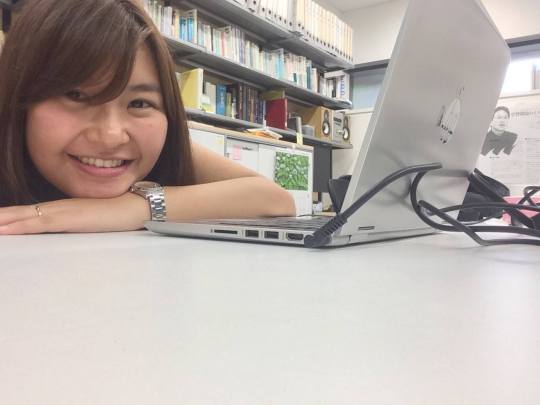
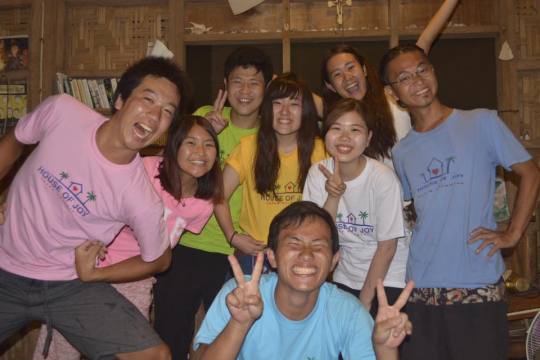
Meet Lian Castillo, computer scientist and future sustainability scientist
1) What do you do?
On weekdays, I am a systems administrator and release engineer. I occasionally volunteer for the Global Schools Program, an initiative of the UN Sustainable Development Solutions Network Youth. I’ve been with them as an ambassador since 2017 and was the outreach lead for the advocates program 2018. Currently part of the core team for the teachers advocates program.
2) Where do you work?
I am with Cambridge University Press, currently still learning about a lot of new technology I haven’t encountered in my previous corporate role. Most interesting is the dynamic shift to cloud architecture. My most recent training was in Amazon Web Services (AWS), which I believe is the tech giant’s crowning glory.
3) Tell us about the photos!
[Left:] Euphoric selfie after my master’s thesis defense! One of the notable questions that made my heart smile was when my advisor simply asked if I had plans to publish my thesis, which he strongly recommended.
[Right:] House of Joy – taken at a Japanese-managed orphanage in Davao Oriental who hosted me during my field research. I am still in close contact with volunteer staff and some visitors who are mostly from Japan.
4) Tell us about your academic career path so far.
Elementary: Ateneo de Davao University
High School: Philippine Science High School - Southern Mindanao Campus
Bachelors: De La Salle University, Computer Science major in Instructional Systems Technology
Masters: University of Tokyo, Information, Technology, and Society in Asia (ITASIA), Ylab (with a summer course at University of Copenhagen)
I am an incoming research student (PhD track) for the University of Tokyo’s graduate program in Sustainability Science. I will be under the tutelage of a professor I had for an elective I cross-enrolled in back in 2016. I found his work really interesting and was hoping to learn more about sustainability along with my tech and education background.
5) Anything else you’d like to share
As you can tell, I haven’t exactly had a linear route and it’s because I like doing a lot of different things. Among them are painting, SCUBA diving, and Pokémon catching! I know there’s a lot of talk about mental health in academia and I feel like these miscellaneous activities will help humanize you as a person and deviate focus from work. This might sound counterproductive but I found that a healthy change in pace does me better than having a looming obsession over any singular facet. In which case, I close with the importance of having fun. :)
1 note
·
View note
Photo
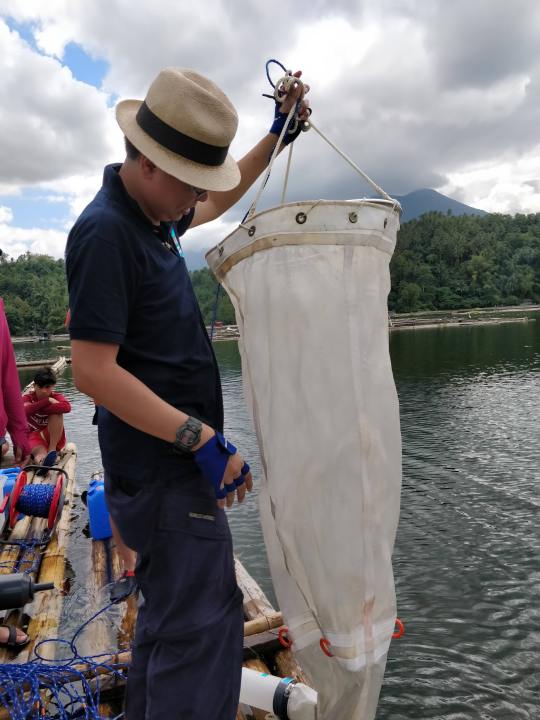

Meet Rey Donne Papa, freshwater ecologist
1) What do you do?
I am a freshwater ecologist and I lead the Zooplankton Ecology, Systematics and Limnology (ZESL) research group at the University of Santo Tomas (UST). I established this research group in 2011, immediately after I finished my doctoral degree.
We conduct research on freshwater microcrustacean zooplankton ecology and systematics and look various aspects of lake ecology, including studies on the biology and ecology of invasive copepods, physical limnology, food web studies, and biodiversity.
Our studies have brought us to different freshwater ecosystems throughout the Philippines. We also collaborate with other local and foreign freshwater scientists to conduct studies in other freshwater ecosystems such as lotic environments (streams and rivers) and groundwater habitats.
So far, I had been able to help mentor three Ph.D.’s, 18 M.Sc.’s and I think almost (if not more than) a hundred undergraduates since I started advising thesis students.
2) Where do you work?
I am currently a Professor at the Department of Biological Sciences in UST. Since January of this year (2020), I am also the Dean of the UST College of Science (at 38, I am the youngest to be appointed to that position so far).
I had previously served as chair of the UST Department of Biological Sciences for 2.5 academic years before I assumed the deanship. My first teaching appointment in UST was as a Teaching Assistant right after I finished my college degree in 2002 and rose through the ranks since then. I teach zoology and ecology courses in the undergraduate and graduate levels.
3) Tell us about the photos!
[Left:] Collecting zooplankton in Lake Calibato using a 102 um mesh size plankton net. This is the largest (and most expensive) net we have in our inventory. Since assuming administrative posts, I relish the few times that I can join my students on field work, usually wearing my Panama hat or my flat tweed cap (see photo in Lake Taal), depending on the weather!
[Right:] I am well-known in the college for my research on zooplankton, thus, it is not surprising that for my birthdays (I was born October 17, 1981), I usually receive plankton-themed gifts or food. Here is a cupcake with Sheldon Plankton, the infamous villain of SpongeBob SquarePants.
4) Tell us about your academic career path so far.
Elementary and High School – Marist School, Marikina
B.Sc. Biology – University of Santo Tomas (College of Science)
M.Sc. in Biological Sciences – UST (cum Laude)
Ph.D. in Biological Sciences – UST (cum Laude) (with a 6-month DAAD Sandwich Research Fellowship in the Limnological Institute, University of Konstanz, Germany)
Expert-in-Training – Museum and Institute of Zoology, Polish Academy of Sciences, Warsaw, Poland (April - May 2012)
Visiting Researcher – Invertebrate Zoology, California Academy of Sciences, USA (June - July 2016)
A loyal Tomasino, I have been affiliated with the Department of Biological Sciences of the College of Science, University of Santo Tomas since June 2002 (from Teaching Assistant to Professor). I received my tenure in UST in 2007. I am also affiliated with the UST Research Center for the Natural and Applied Sciences (since 2006) and the UST Graduate School (since 2013).
5) Anything else you’d like to share?
I hope that more young Filipinos would consider a career in science. We need a critical mass of scientists to cover many uncharted disciplines or sub-disciplines in the sciences. Given the growing number of available government scholarships to pursue science graduate (and undergraduate) degrees, we hope that more individuals get interested in pursuing science careers. As science and national development go together, a scientifically literate society would also be a sure indicator of future economic prosperity for our country.
I would also like to emphasize that ALL sciences are important. As such, those who work on the fundamental sciences (such as my field) should be supported in the same way that those working on the applied sciences are supported.
Lastly, all good science should be published. I encourage all our undergraduate science students to aim for quality research outputs, which may end up being considered for publication in the future. With proper mentorship from more established scientists, this is not impossible to achieve! Publications are an effective means of checking on the quality of science one has conducted, so good science should always find their way into quality publications.
3 notes
·
View notes
Photo


Meet Christian Laurio, materials scientist
1) What do you do?
I am a doctoral student in Materials Science with research focusing on the strong coupling of an optical mode called Bloch surface waves (BSW) and exciton in photonic multilayer platforms. The strong coupling of light (photons) and matter (surface plasmons, phonons, excitons) leads to hybrid light-matter quasiparticles called polaritons.
In my research, I perform numerical and experimental work to determine the influence of multilayer structural parameters (thickness, materials, etc) on the Rabi splitting, which is a measure of the strength of interaction, and polariton mode visibility. I simulate, fabricate, and characterize photonic multilayer structures and use spectroscopy to study the system.
2) Where do you work?
I belong to the Quantum Materials Science Laboratory at the Nara Institute of Science and Technology in Nara, Japan. I perform all my research activities within the Division of Materials Science.
3) Tell us about the photos!
[Left:] This is me and my cleanroom buddy-- I often use it to fabricate my samples, an RF magnetron sputtering system.
[Right:] From my research visit at the University of Eastern Finland as part of my doctorate program. I spent two months in the beautiful city of Joensuu, where temperatures drop to as low as -30°C. It was a winter wonderland!
4) Tell us about your academic career path so far.
I graduated from the Valenzuela City Science High School (now Valenzuela City School of Mathematics and Science) and proceeded with my bachelor’s and master’s degrees in Physics at the Ateneo de Manila University. I am actually expecting to graduate this September and will move to the University of Bonn in Germany for a postdoc position.
5) Anything else you’d like to share?
Studying and living in Japan is a great experience. Although language barrier can be a problem (especially for me who didn’t have enough motivation to really learn Japanese), luckily there are many Filipinos and other international students at my university.
11 notes
·
View notes
Photo

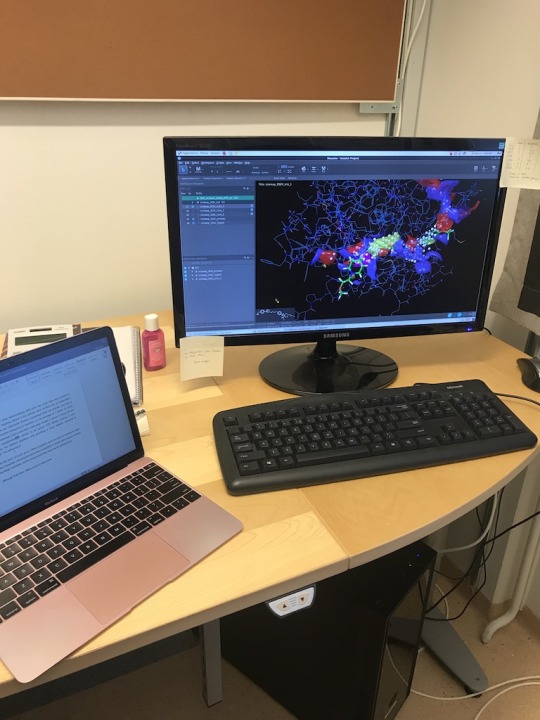
Meet Flor Cobar, pharmaceutical chemist and drug development scientist
1) What do you do?
I am currently an MSc student in Pharmaceutical Modelling. I apply my theoretical and practical knowledge of advanced modelling techniques including computational chemistry, modelling of clinical and preclinical data, machine learning, bioinformatics and programming skills to various disciplines of drug discovery, development, and usage.
2) Where do you work?
I am currently doing my degree project in the field of computational medicinal chemistry at the Department of Pharmaceutical Chemistry, Drug Design and Development at Uppsala University in Sweden.
3) Tell us about the photos!
[Left:] A photo from my visit to Stockholm
[Right:] In the picture, I was mapping potential binding sites of MMP13 (matrix metalloproteinase 13) enzyme to evaluate druggability. It’s a small part of my project which is about optimization and evaluation of virtual screening protocols.
4) Tell us about your academic career path so far.
I finished BS Pharmacy in CEU Manila and continued to obtain a Doctor of Pharmacy in CEU Makati. Immediately after I finished PharmD, I taught in CEU Manila and Makati for 2 years. I applied for a scholarship in Uppsala University and I was awarded with IPK Uppsala University Scholarship.
5) Anything else you’d like to share
In silico (or performed in computer or via computer simulation) methodologies in the field of pharmaceutical sciences has not been accepted or practiced yet in the Philippines (to my knowledge). These techniques will help us make smart decisions of identifying compounds/molecules that are needed to be prioritized and tested, thus saving a lot of time and money in drug discovery and development. As an academician and a researcher, I hope that in silico methods will be practiced in pharmaceutical research in the Philippines as it is becoming the norm in EU, USA and in Japan.
11 notes
·
View notes
Photo
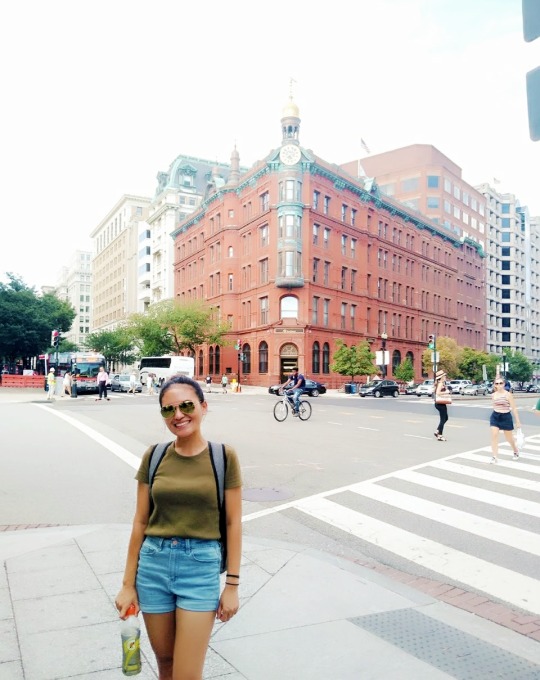

Meet Kirstene Gultian, biomedical and chemical engineer
1) What do you do?
I am a doctoral research fellow at Rowan University in New Jersey, USA with focus is on Bioengineering and Biomedical Engineering. In my research, I develop hydrogel-based materials for tissue engineering and regenerative medicine, particularly for bone regeneration, and guiding stem cell differentiation and behavior.
I am also a licensed chemical engineer. Having a background in chemical engineering is an advantage in biomedical engineering as I get to apply many chemical engineering concepts in my work.
2) Where do you work?
Rowan awarded me a full scholarship, so I mostly do research at the university. I also collaborate with institutions such as the Cooper Medical School of Rowan University (Camden, NJ) and the New York Stem Cell Foundation (New York, NY) to work on some awesome research!
3) Tell us about the photos!
[Left:] My hobby is traveling! I did not realize this until I came to America (haha!). My recent travels were to Washington DC and Pittsburgh in Pennsylvania. I also get a lot of free trips for conferences - grad school perks!
[Right:] Doing a research demonstration for senior students at Glassboro High School (NJ). Here, I photocrosslinked a few hydrogels and talked about my research on bone regeneration and stem cells. I purposely made hydrogels that were safe for the students to touch. They found it cool and said, “feels like jello!”
4) Tell us about your academic career path so far.
Elementary: Sto. Nino SPED Center in Tacloban City, Leyte. I wasn’t an outstanding student in elementary. I was always loud, and I didn’t study much.
High school: Philippine Science High School Main Campus in Diliman, Quezon City. It was my very first time in Manila, and the first time I was away from family. I had no idea that culture shock could get so real.
College: the University of the Philippines Diliman in Quezon City. I graduated in 2017 with a degree in Chemical Engineering. College was fun, but I was more of an “at-home” person. Most of my high school friends were also in UP Diliman, so it almost felt like I was still in Pisay (Phil. Sci.).
Graduate school: Started my Ph.D. journey at Rowan University in 2018. I blended well pretty quickly, which is pretty surprising.
5) Anything else you’d like to share
Biomedical engineering is almost non-existent in the Philippines. However, it is a field that I believe will impact Filipinos’ lives. I hope that one day I can bring this field to the Philippines and share my experience and knowledge of the field to my fellow Filipinos. I am sure that with the grit of Filipinos, contributing meaningful research to the area will be a breeze!
26 notes
·
View notes
Photo

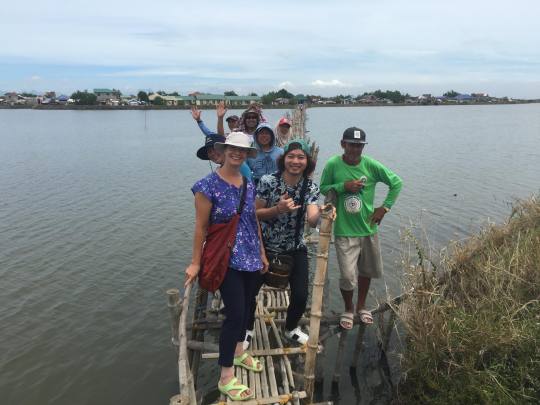
Get to know Christian Gloria, public health researcher
1) What do you do?
I am an Associate Professor and Chair of the Department of Public Health at Hawaii Pacific University (www.hpu.edu), located in Honolulu, Hawaii, USA. I am a teacher, a researcher, and an administrator at HPU, where I have been a faculty member since 2012.
I am also a Balik Scientist (or a Visiting Scientist) of the Philippine Council for Health Research & Development of the Department of Science & Technology. In this role, I serve as a research collaborator on various mental health and public health projects with Angeles University Foundation (Angeles), University of the Assumption (San Fernando), and University of San Agustin (Iloilo). Occasionally, I serve as a guest speaker for many universities around the country as well.
2) Where do you work?
My full-time job is at Hawaii Pacific University, in Honolulu, Hawaii.
Before the COVID-19 pandemic, I usually visit the Philippines 2-4 times a year for my Balik Scientist activities. Although I normally spend most of my time there in Angeles and Manila, I often travel across the country from Baguio to Davao, for research, to visit colleagues, and, of course, for cultural and sight-seeing experiences.
3) Tell us about the photos!
[Left:] Taking selfies and avoiding doing any work in my office at Hawaii Pacific University (Honolulu, Hawaii)
[Right:] Community health field research in Macabebe City, with community members and the research team from Angeles University Foundation (June 2019)
4) Tell us about your academic career path so far
I was born and raised in Valenzuela, Metro Manila, but moved to the US after Grade 5. In the US, I attended The University of Texas at Austin where I earned my BS in Kinesiology, MA in Health Education, and PhD in Health Behavior & Health Education. After I completed my PhD, I moved to Hawaii for my current job at Hawaii Pacific University.
5) Anything else you’d like to share.
For more info, please visit my faculty bio page at www.christiangloria.com and feel free to contact me there or on Facebook. I would love to widen my network of Pinoy Scientists and collaborate on projects together!
1 note
·
View note
Photo


Meet Cherrie Calderon, chemist and environmental management consultant
1) What do you do?
I am a registered chemist and with 20 years of experience in establishing and managing environmental laboratories. This involves business development, proper handling and use of analytical instruments, management of laboratory wastes, training of laboratory staff and conducting seminars for clients.
On top of this operational management, I design and ensure the effective implementation of Laboratory Information Management Systems and Compliance to ISO 17025. My expertise and track record is on Environmental Laboratory Operations/Directorship/Project Management and Consultancy both in the Philippines and the United States.
2. Where do you work?
I am currently a co-trainer and partner at EVD Seventh Sigma Management Consulting.
3) Tell us about the photos!
[Left:] Conducting Pollution Control Officer (PCO) Training at Mosser Environmental Corporation in Negros Occidental.
[Right:] Relaxing, chilling and goofing around with my partner trainer & consultant, chemical engineer Evelyn Dofredo.
4) Tell us about your career path so far.
Elem & HS: College of the Holy Spirit of Tarlac
BS Chemistry: University of the Philippines - Diliman
MS Chemistry (ongoing): University of the Philippines - Diliman
5) Anything else you'd like to share.
There is more to us (Pinoy Scientists) than meet the eye. :)
3 notes
·
View notes
Photo


Meet John Boaz Lee, machine learning researcher
1) What do you do?
I am a machine learning and data mining researcher. My main area of research is in the intersection of graphs and deep learning. Many different things can be represented mathematically as graphs. For instance, we can represent molecules as graphs — the nodes in a graph are atoms and the edges represent bonds between these atoms.
A functional MRI scan of the brain can also be modeled as a graph where regions in the brain are denoted by nodes and edges represent a correlation in the activity between the corresponding regions. Given these graphs, we can begin to ask a lot of interesting questions. For instance, what subgraph patterns tend to surface in the brain networks of people suffering from Alzheimer's that are atypical of healthy brain networks.
2) Where do you work?
I am a Research Scientist at Facebook where I do more applied research. More recently, my work fall in the areas of graph representation learning and temporal sequence modeling.
3) Tell us about the photos!
[Left:] My dissertation defense for my Ph.D. in Computer Science at Worcester Polytechnic Institute (WPI).
[Right:] At the top of Pemetic Mountain at Acadia National Park. Acadia is one of the National Parks in the Northeast USA where I went to grad school.
4.) Tell us about your academic career path so far.
I went to high school in Cebu at Philippine Christian Gospel School. I then went to Dumaguete for my Undergrad at Silliman University; moved to Manila for my Masters at UP Diliman; finally, I flew to Massachusetts to do my PhD at Worcester Polytechnic Institute.
If the probability of getting a good thesis advisor is 0.25, I'd say I'm pretty blessed to have gotten outstanding advisors every single time (P = 0.25 x 0.25 x 0.25 = 0.016). A shoutout to my wonderful academic mentors: Dr. Dave Marcial (SU), Dr. Henry Adorna (UPD), and Dr. Xiangnan Kong (WPI).
5.) Anything else you’d like to share.
If you're like the majority of Filipinos, paying for a PhD abroad is out of the question — I certainly didn't have the money to pay for even a single year of grad school in the US. Luckily, in Computer Science, acceptance into a grad school typically comes with a TAship or RAship offer (what this means: tuition is waived, full medical insurance, and a monthly stipend). Read more on how to apply to a graduate school here!
2 notes
·
View notes
Photo
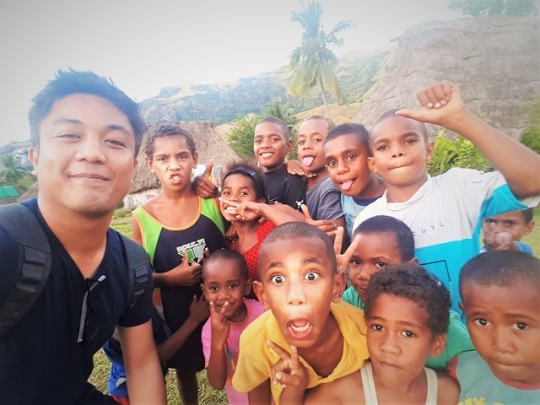

Meet Harold Aquino, humanitarian and resilience engineer
1) What do you do?
I’d like to call what I do humanitarian and resilience engineering. I travel to disaster-stricken areas, work with and for communities, help them recover and rebuild from the impacts of disasters, and co-create with them knowledge and solutions towards developing resilience.
2) Where do you work?
I am on study leave from my post as Assistant Professor at the UP Diliman Institute of Civil Engineering and am currently a doctoral researcher at the Centre for Disaster Resilience, Recovery and Reconstruction (CDRRR) of the University of Auckland in New Zealand.
3) Tell us about the photos!
[Top:] With my "squad" at Navala Village in Fiji after they took me around the village to inspect the housing damage caused by Cyclone Winston. #theworldismylab.
[Bottom:] Whenever I get saturated, music is my escape, be it singing or playing an instrument.
4) Tell us about your academic career path so far.
It was in New Jerusalem School (Elementary) that I developed an affinity for science. Philippine Science High School had gave me the depth of knowledge and equipped me with the essential skills to conduct scientific inquiries.
University of the Philippines Diliman broadened my horizons and taught me how we can use science to serve the people and change the world for the better.
Now at the University of Auckland, about to finish my Ph.D., I have seen and experienced the cutting edge and I’m now prepared to bring these experiences with me back home.
5) Anything else you’d like to share
I have my long-standing, deep hugot why I’m so into disaster research. I was standing on my mom’s office table on the 9th floor of SSS Main Office in Quezon City when there was this sudden strong shaking; my mom and I then hid under the table. That was my earliest childhood recollection and it was the 1990 Luzon earthquake that caused the collapse of the Hyatt Hotel. That's what continues to drive me to strive towards disaster resilience.
2 notes
·
View notes
Photo
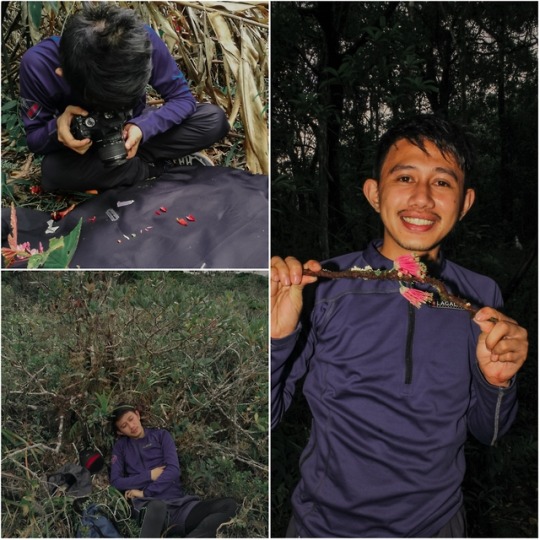

Meet Mark Arcebal Naive, botanist
1) What do you do?
I am a proud botanist, currently working on flowering plants, specifically on the families Zingiberaceae and Orchidaceae. I love exploring the forests and mountains, most especially discovering or finding species new to science.
As a matter of fact, I have already discovered 23 new species of orchids (Orchidaceae), 3 new species of gingers (Zingiberaceae) and 1 new species of Aroids (Araceae). I am also about to finish my study on the Taxonomy and Molecular Phylogeny of Etlingera (Zingiberaceae) in Mindanao, Philippines.
Currently, I am in China participating in the Advanced Fieldcourse in Ecology and Conservation held in Xishuangbanna Tropical Botanical Garden (XTBG), Chinese Academy of Sciences.
2) Where do you work?
I am a MS Biology student at Mindanao State University-Iligan Institute of Technology (MSU-IIT) in Iligan City, Lanao del Norte, Philippines. I am on my last semester so will hopefully be graduating soon.
3) Tell us about the photos!
[Left:] This is a photo taken during our fieldwork in one of the mountains of Bukidnon province. It shows typical me during fieldwork doing my floral dissections for better illustration of each species, resting from a hot and exhausting trekking, and always taking a selfie whenever beautiful flowers are spotted.
[Right:] I chose this photo because this is very memorable for me, as I was awarded as the 2nd best placer for poster presentation (for the Biology/Microbiology/Health Science category) during the DOST-ASTHRDP Graduate Research Conference year 8 last May 2-3, 2019. It was proof of hard work paying off!
4) Tell us about your academic career path so far.
Elementary: Dologon Central Elementary School, Bukidnon, Philippines (2007)
High School: Dologon National High School, Bukidnon, Philippines (2011)
BS in Biology: Central Mindanao University, Bukidnon, Philippines (2016)
MS in Biology (on-going): Mindanao State University-Iligan Institute of Technology, Iligan City, Philippines
My research interests includes Botany, Plant Systematics, Plant Taxonomy, Molecular Phylogeny, Ecology and Conservation.
5) Anything else you’d like to share?
Every time we make our discoveries known to the general public and not only to the scientific community, it is for the intention of informing a bigger audience. It is to inform everybody and INVITE everyone to take part in conserving our very own species and their habitats. The current degradation of our forests is very alarming. Although the issue is actually complex, I believe it still boils down to people's awareness, love for the environment, and our desire to protect our one and only home.
Recently, we got all these comments from people when our new species got published in local media. Some comments are funny but most are sad and pitiful. It is easy to ignore them but their comments reflect a greater need to EDUCATE more and more people and reach out to the grass roots and to educate the children and create awareness on the importance of our flora and fauna in the ecosystem.
Plants aren't just plants and animals aren’t just animals. They have a life. They play important roles in the ecosystem. And just like a domino effect, the loss of one group of organism can trigger the extinction of other organisms including humans.
4 notes
·
View notes
Photo
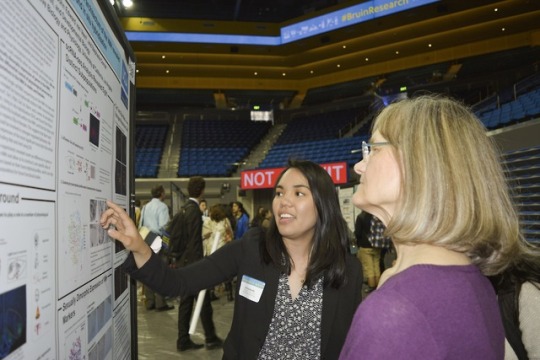
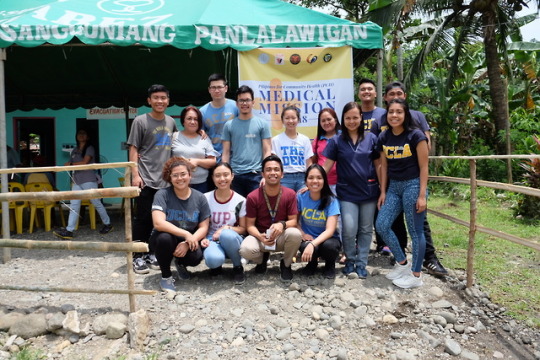
Get to know Patricia Bunda, biomedical scientist and cancer researcher
1) What do you do?
My current research project focuses on creating mouse models of organ-specific cancer metastasis which are useful tools in pre-clinical testing of novel immunotherapy treatments and in studying the ability of cancer cells to preferentially metastasize to organs such as the brain and the bone.
Most, if not all, of us know someone who is suffering or had suffered from cancer. Being able to work on something that can help cure this disease is a unique privilege that motivates me on a daily basis.
2) Where do you work?
I currently work as a post-baccalaureate researcher at the National Cancer Institute, National Institutes of Health (NIH) in Bethesda, Maryland. Working in the largest biomedical facility in the world enables me to collaborate with experts and see the potential impact of my basic science research in the clinical setting.
3) Tell us about the photos!
[Top:] I was presenting the results of my senior thesis to one of the judges at the UCLA Undergraduate Research Poster Day. I remember being quite nervous but, at the same time, excited to present the results of my year-long project. Winning the Dean's Prize was just icing on the cake!
[Bottom:] Apart from my research involvement, I also served as the medical outreach director for Pilipinos for Community Health (PCH) at UCLA during my senior year in college. I was in charge of planning and fundraising for our medical mission to the Philippines. This photo was taken at Sitio Kidadayaig in General Nakar, Quezon Province where our team helped provide basic medical services to over a hundred residents of this remote mountain community.
4) Tell us about your academic career path so far.
I graduated from Imus Institute Science High School in Imus, Cavite. My biology teacher, Mr. Donnie Legaspi, inspired me to study Biology in UP Los Baños. After only my sophomore year at UPLB, my family decided to immigrate to the US. I continued to pursue Biology at Palomar College and eventually transferred to University of California, Los Angeles (UCLA) where I graduated Summa Cum Laude with a Bachelor’s degree in Molecular, Cell, and Developmental Biology, minor in Biomedical Research. I am concurrently doing research and applying to MD/PhD programs here in the US.
5) Anything else you’d like to share?
According to a University of the Philippines study, 6 out of 10 Filipinos die without seeing a doctor. Growing up in a small town in the Philippines and seeing firsthand the reality of this statistic motivated me to pursue a career in medicine. However, my research experience in the US allowed me to realize that a good healthcare system and a strong research community go hand in hand. Every year, countless doctors, nurses, and scientists leave the Philippines in search of better employment opportunities overseas. This creates a shortage of high-skilled workers that are supposed to be integral parts of our country’s healthcare sector. I believe that promoting biomedical research is a powerful way to improve healthcare in the as it fosters a society that supports and encourages intellectuals to stay in their own country instead of seeking jobs abroad.
In 2013, the Philippines only had 187.7 scientists per million people, one of the lowest densities of researchers in the world. To all Pinoy Scientists out there, I urge you to advocate for and help develop the research field in our country. You can start small by mentoring an aspiring young pinoy scientist or go big and take advantage of the DOST Balik Scientist Program (https://bspms.dost.gov.ph/).
With the innate curiosity and resourcefulness of Filipinos, I believe that we have the potential to make a significant impact in the larger scientific community and help improve the lives of our countrymen. Mabuhay ang mga siyentipikong Pinoy!
P.S. I am planning to start a facebook group for current and aspiring Pinoy scientists to share experiences, ideas, and opportunities with each other. If you're interested in helping me start this group, shoot me a message (facebook.com/patbunda). Also, feel free to contact me if you want to learn more about cancer research!
4 notes
·
View notes